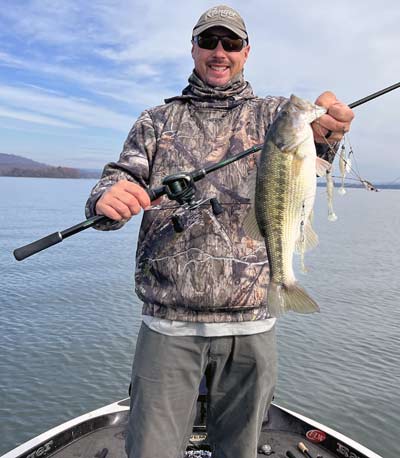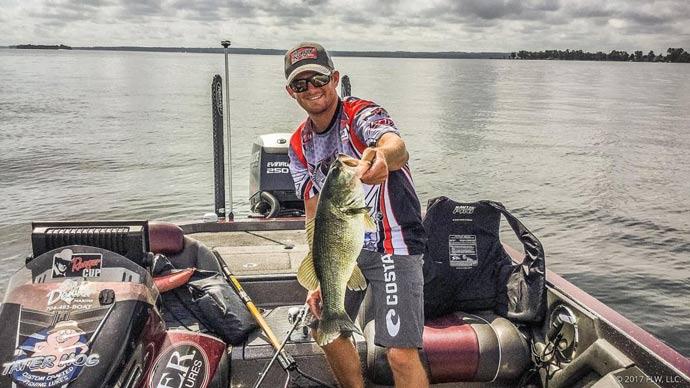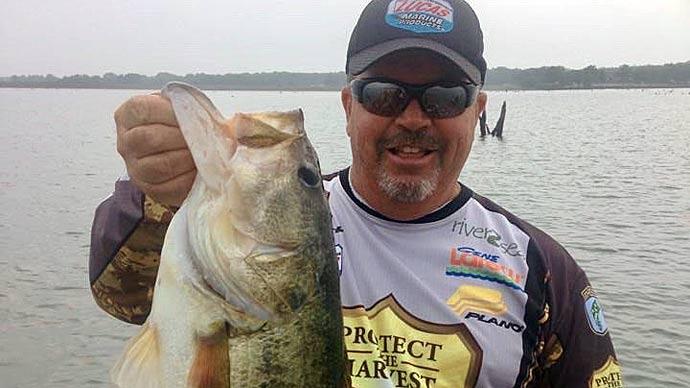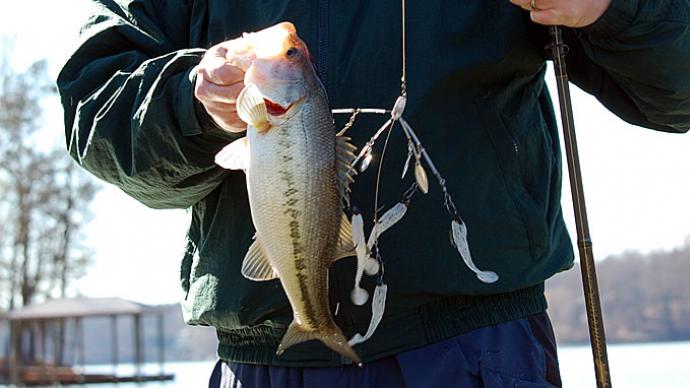
The year was 2011 when Paul Elias showed the world the castable umbrella rig, or Alabama Rig, at a 2011 FLW Tour event with a dominating win on Lake Guntersville. That started a frenzy as anglers rushed to get one, and companies began making them more widely available. It worked so well that it was deemed too effective and unfair, and the top professional tours banned it. Since then, things have changed quite a bit, but it's still a very effective tool for catching bass.
The Alabama Rig has changed over the years from the best lure to use to something that has become more specialized. However, it still belongs in your arsenal, especially when cold weather sets in, according to Lake Guntersville guide and pro angler Alex Davis, who has witnessed the evolution firsthand.
The Start of the A-Rig
Albertville, Alabama's Davis was at the beginning of the epicenter of the Alabama Rig explosion on his home lake, Lake Guntersville, finishing 10th in that event that Elias won. He saw firsthand how well the fish reacted to it and the subsequent simmering as the fish got used to it. Even more than a decade later, Davis still uses it but has changed his approach with bait size and the gear he uses to fish it.
"That rig cleaned their clocks for a few years, and if you weren't throwing it, you were not going to win the tournament," Davis recalled. "We were all still learning it, and we started throwing 5-inch swimbaits and then moved up to 6-inch baits, and the fish you caught just kept getting bigger. Since then, the fish have gotten used to seeing it, and we have learned that much smaller swimbaits get the most attention. Now I'm using a 3-inch Crush City The Mayor or Scottsboro Tackle 3.5-inch bait because anything bigger than that is too big and doesn't get the same amount of bites."
It's still part of his arsenal, but how he fishes the Alabama Rig has changed. Davis's main takeaway is that it has become much more conditional.
"It used to be where you just fished it anywhere and anytime and could catch fish with it since they hadn't seen it," he said. "Now, it's something that works well some days, and other days, they won't touch it. It's become just another lure, another tool, now that you can use when the conditions line up, and that's usually going to be during the colder months."
BassResource may receive a portion of revenues if you make a purchase using a link above.
When and How to Fish It

Davis likes to fish it anytime the dam generates current on his home lake, another lake on the TVA chain, or when there is a little cloud cover and wind, just like other reaction baits.
"It's a bait that I fish more like an oversized ChatterBait now or a spinnerbait," he said. "Those are the same conditions that work for those lures, and that's when the A-Rig shines. And still, there are some days when the jerkbait will outshine the rig; it's just something you have to experiment with because it's not magic, but still has a time and place."
Davis will often fish it around grass or other fish-holding cover like trees or rockpiles that he sees on his Humminbird Mega Live forward-facing sonar. He says the rig shows up so well that it's also a very effective way to learn this technology and see how fish react.
"One of the best places to fish is just above grass or around some cover the bass are using," he said. "It's been eye-opening watching your bait on forward-facing sonar because you can see the fish tracking it and give your reel two quick handles to get the rig and swimbaits to pulse. That's usually right when they unleash fury and bite it. That's one of the biggest keys during the retrieve, to make the baits pulse and undulate once in a while instead of just casting it and reeling it back to you."
Gear Used, Then and Now
Aside from the switch to smaller baits, Davis says that the gear used for the technique has made things much easier to fish the rig. When he started fishing with it, the gear they used was a heavy braided line and the beefiest rod they could find.

"We were using a big flipping stick and 65-pound braid, and you had to heave and lob this big giant thing out there," he said.
"Over the years, my rig has gotten smaller, and the baits and jigheads are also much smaller. Now, I like a rod that is much more parabolic, absorbs a lot of shock, and makes it easier to cast. I use a 7-foot, 8-inch extra heavy Shimano Curado rod designed for flipping but has a nice bend."
Now, Davis opts for a slightly smaller braid, a 50-pound Power-Pro, and spools it on a 7.1:1 Shimano Curado reel. "I know many guys prefer fluorocarbon, but I haven't noticed that you get fewer bites with braided lines," he said. "Braid is also great because you can straighten out your hooks if you get hung up and mess up a jighead instead of losing the whole rig. I've settled on the 7.1:1 gear ratio because it allows me to slow my retrieve down when fishing deeper, but I can use that same reel and burn the rig if I'm fishing shallow water and need to keep it up above grass."
The Alabama Rig has been around for years, and the initial luster has faded, but it's still a remarkable way to catch fish feeding on baitfish. It's become a tool for specific situations and will catch plenty of bass every winter.




